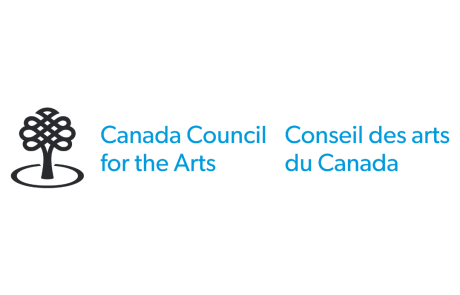
Kevin McKenzie, “Re-Animator,” 2005, giclee print, 40.6 x 50.8 cm. Photo courtesy of the artist.
Kevin McKenzie | Re-Animator
MacKenzie Art Gallery
July 19, 2006 to September 24, 2006[Originally published online for Galleries West, 2006]
Kevin McKenzie’s Re-Animator stirs up some interesting questions about how we read photographs. If you stumbled into this exhibition knowing nothing about the artist, you would see one show. But if you read the artist’s and curator’s statements, you would find yourself contemplating an entirely different one. This sort of thing happens all the time. But in this case, there is such a gap between the images and texts that it might make you wonder about the relationship between pictures and intentions.
Here is what I saw before I read about it: Re-Animator occupies three small rooms in the Mackenzie Art Gallery. A digital slide show is projected in the center room, mid-sized black and white digital, photographic, and giclee prints are in the other galleries. The prints are unframed sheets held on the wall by small magnets. The pictures in the first room have the grainy, flat appearance of low resolution digital prints. The eleven photographs and gilcee prints in the third room are much richer.
McKenzie’s subjects are old gears, cogs, flywheels, and other derelict machine parts discovered in an abandoned factory. While some of the gears may have been repositioned to improve a composition, undisturbed dust suggest that most are documented as found. I had the sense as I moved through the rooms that I was tracing the steps of the artist as he stalked his aesthetic prey. While a romantic impulse is triggered by gliding through these modern ruins, these pictures are mostly about pleasing the eye with a formal play of light and shadow, chiaroscuro, and of finding beauty in wreckage.
Re-Animator could be a photo essay about the fading of the Industrial Era. But that would be pretty old news. I don’t think that Mackenzie is making a sociological proposition here; he is simply sharing the thrill of finding visual pleasure in unexpected places. Photography may be an attempt to preserve life, even resuscitate the dead. But it is not inanimate cogs that Re-Animator tries to give life to. Re-Animator reanimates our sense of aesthetic looking. It validates the pleasure we all have in hunting for non-productive visual stimulation. In this show we follow an eye as it roves through the ruins looking not for redemption, but for beauty; for patterns, pleasing shapes, forms removed from function.
If you read the curator’s essay, however, you get quite another story. Timothy Long explains that Kevin McKenzie is Métis/Cree and these images represent a “spiritual journey”: the images work as “abstract compositions, as portraits of a lost industrial enterprise, and, importantly, as spiritual meditations on the connection between First Nations culture and the modern world.” Unfortunately, neither Long nor McKenzie suggests what those “meditations” might be. It could be that McKenzie saw a relationship between medicine wheels, or other Aboriginal symbols, and these objects. If so, it was a fleeting rather than a sustained one. He does not press the visual rhyme even to the level of a motif.
I find this puzzling and intriguing. I am suspicious of the habit of linking spirituality and Aboriginality. Surely there is some space for Aboriginal people to make things unscented by sweet grass, or make things that don’t have a hidden indictment of the postcolonial condition. Don’t get me wrong, there is still something productive about people reading either metaphysics or historical atrocities into every Aboriginal creative gesture—such works would then operate like Rorschach tests, revealing more about the reader than the read. But, in the present example, how are photographs of dusty cogs “spiritual meditations on the connection between First Nations culture and the modern world.” Just what is being suggested here?!? Sometimes an old gear is just an old gear, and not a, sort of, medicine wheel.
 David Garneau (Métis Nation of Saskatchewan) is a Professor of Visual Arts at the University of Regina. He is a painter, curator, and critical art writer who engages in creative expressions of Indigenous contemporary ways of being. Garneau curated Kahwatsiretátie: The Contemporary Native Art Biennial (Montreal, 2020) with assistance from Faye Mullen and Rudi Aker; He co-curated, with Kathleen Ash Milby, Transformer: Native Art in Light and Sound, National Museum of the American Indian, New York (2017). With Tess Allas, he co-curated With Secrecy and Despatch, for the Campbelltown Art Centre, Sydney, Australia (2016). He and Michelle Lavallee curated Moving Forward, Never Forgetting at the Mackenzie Art Gallery (2015). Garneau has given keynotes on mis/appropriation; re/conciliation; public art; museum displays; and Indigenous contemporary art. He presented, Dear John, a performance featuring the spirit of Louis Riel meeting with John A. Macdonald statues in Regina, Kingston, and Ottawa. David recently installed a large public artwork, the Tawatina Bridge paintings, in Edmonton. His recent still life paintings, Dark Chapters, curated by Arin Fay, will tour Canada in 2025. In 2023, Garneau was awarded the Governor General’s Award in Visual and Media Art: Outstanding Achievement and was inducted into the Royal Society of Canada.
David Garneau (Métis Nation of Saskatchewan) is a Professor of Visual Arts at the University of Regina. He is a painter, curator, and critical art writer who engages in creative expressions of Indigenous contemporary ways of being. Garneau curated Kahwatsiretátie: The Contemporary Native Art Biennial (Montreal, 2020) with assistance from Faye Mullen and Rudi Aker; He co-curated, with Kathleen Ash Milby, Transformer: Native Art in Light and Sound, National Museum of the American Indian, New York (2017). With Tess Allas, he co-curated With Secrecy and Despatch, for the Campbelltown Art Centre, Sydney, Australia (2016). He and Michelle Lavallee curated Moving Forward, Never Forgetting at the Mackenzie Art Gallery (2015). Garneau has given keynotes on mis/appropriation; re/conciliation; public art; museum displays; and Indigenous contemporary art. He presented, Dear John, a performance featuring the spirit of Louis Riel meeting with John A. Macdonald statues in Regina, Kingston, and Ottawa. David recently installed a large public artwork, the Tawatina Bridge paintings, in Edmonton. His recent still life paintings, Dark Chapters, curated by Arin Fay, will tour Canada in 2025. In 2023, Garneau was awarded the Governor General’s Award in Visual and Media Art: Outstanding Achievement and was inducted into the Royal Society of Canada.
Photo credit: Mika Abbott










